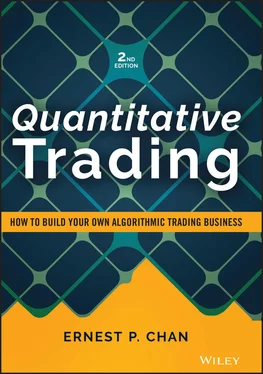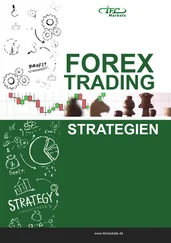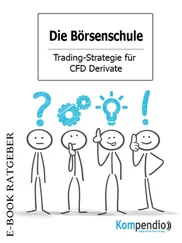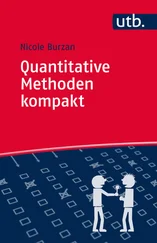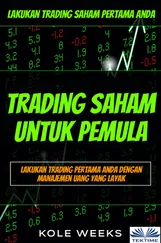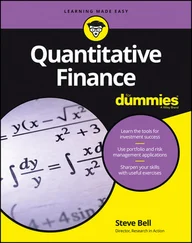How much time you need to spend on day-to-day quantitative trading depends very much on the degree of automation you have achieved. For example, at a well-known hedge fund I used to work for, some colleagues come into the office only once a month. The rest of the time, they just sit at home and occasionally remotely monitor their office computer servers, which are trading for them.
When I started my independent quantitative trading career, I was in the middle of the pack in terms of automation. The largest block of time I needed to spend was in the morning before the market opened: I typically needed to run various programs to download and process the latest historical data, read company news that came up on my alert screen, run programs to generate the orders for the day, and then launch a few baskets of orders before the market opened and start a program that will launch orders automatically throughout the day. I would also update my spreadsheet to record the previous day's profit and loss (P&L) of the different strategies I ran based on the brokerages' statements. All of these took about two hours.
After that, I spent another half hour near the market close to direct the programs to exit various positions, manually check that those exit orders were correctly transmitted, and close down various automated programs properly.
In between market open and close, everything is supposed to be on autopilot. Alas, the spirit is willing but the flesh is weak: I often cannot resist the urge to take a look (sometimes many looks) at the intraday P&L of the various strategies on my trading screens. In extreme situations, I might even be transfixed by the huge swings in P&L and be tempted to intervene by manually exiting positions. Fortunately, I have learned to better resist the temptation as time goes on.
The urge to intervene manually is also strong when I have too much time on my hands. Hence, instead of just staring at your trading screen, it is actually important to engage yourself in some other, more healthful and enjoyable activities, such as going to the gym during the trading day.
As my automation improved and the assets under management grew (both my own and my investors’), fewer and fewer of these steps were taken manually, until they reached zero some years ago. Aside from monitoring and intervening when software and connectivity broke down (and they occasionally did), my colleagues and I routinely do absolutely nothing every day in terms of actually trading our strategies. We are in a fully autonomous vehicle, so to speak, except our eyes are still on the road and ready to apply the brakes when the system breaks down. Just like an autonomous vehicle, our automated trading system will send out all sorts of alarms to whoever is on duty when that happens.
(Lest you think my trader life is too idyllic to be true, the breakdown did happen when I was on a Caribbean beach during the Covid-19 selloff in February 2020. Fortunately, after frantically texting my office colleagues, we ended the day with a nice profit. What happened back at the cruise ship as it sailed back to Florida was a bit more troubling.)
When I said quantitative trading takes little of your time, I am referring to the operational side of the business. If you want to grow your business, or keep your current profits from declining due to increasing competition, you will need to spend time doing research and backtesting on new strategies. But research and development of new strategies is the creative part of any business, and it can be done whenever you want to. So, between the market's open and close, I do my research; answer emails; chat with other traders, collaborators, or clients; take a hike; and so on. I do some of that work in the evening and on weekends, too, but only when I feel like it—not because I am obligated to.
The Nonnecessity of Marketing
Here is the biggest and most obvious difference between quantitative trading and other small businesses. Marketing is crucial to most small businesses—after all, you generate your revenue from other people, who base their purchase decisions on things other than price alone. In trading, your counterparties in the financial marketplace base their purchase decisions on nothing but the price. Unless you are managing money for other people (which is beyond the scope of this book), there is absolutely no marketing to do in a quantitative trading business. This may seem obvious and trivial, but is actually an important difference, since the business of quantitative trading allows you to focus exclusively on your product (the strategy and the software), and not on anything that has to do with influencing other people's perception of yourself. To many people, this may be the ultimate beauty of starting your own quantitative trading business. Of course, if you plan to manage other people's money, marketing will be more important. But even then, I have learned that a good investment product (a.k.a. a consistently profitable strategy) practically markets itself. Conversely, even if a superstar salesperson managed to market a mediocre product to an unwitting customer, retention of that customer is going to be an uphill battle.
If you are convinced that you want to become a quantitative trader, a number of questions immediately follow: How do you find the right strategy to trade? How do you recognize a good versus a bad strategy even before devoting any time to backtesting them? How do you rigorously backtest them? If the backtest performance is good, what steps do you need to take to implement the strategy, in terms of both the business structure and the technological infrastructure? If the strategy is profitable in initial real-life trading, how does one scale up the capital to make it into a growing income stream while managing the inevitable (but, hopefully, only occasional) losses that come with trading? These nuts and bolts of quantitative trading will be tackled in Chapters 2through 6.
Though the list of processes to go through in order to get to the final destination of sustained and growing profitability may seem long and daunting, in reality it may be faster and easier than many other businesses. When I first started as an independent trader, it took me only three months to find and backtest my first new strategy, set up a new brokerage account with $100,000 capital, implement the execution system, and start trading the strategy. The strategy immediately became profitable in the first month. Back in the dot-com era, I started an internet software firm. It took about 3 times more investment, 5 times more human power, and 24 times longer to find out that the business model didn't work, whereupon all investors including myself lost 100 percent of their investments. Compared to that experience, it really has been a breeze trading quantitatively and profitably.
CHAPTER 2 Fishing for Ideas: Where Can We Find Good Strategies?
This is the surprise: Finding a trading idea is actually not the hardest part of building a quantitative trading business. There are hundreds, if not thousands, of trading ideas that are in the public sphere at any time, accessible to anyone at little or no cost. Many authors of these trading ideas will tell you their complete methodologies in addition to their backtest results. There are finance and investment books, newspapers and magazines, mainstream media websites, academic papers available online or in the nearest public library, trader forums, blogs, and on and on. Some of the ones I find valuable are listed in Table 2.1, but this is just a small fraction of what is available out there.
In the past, because of my own academic bent, I regularly perused the various preprints published by business school professors or downloaded the latest online finance journal articles to scan for good prospective strategies. In fact, the first strategy I traded when I became independent was based on such academic research. (It was a version of the PEAD strategy referenced in Chapter 7.) Increasingly, however, I have found that many strategies described by academics are either too complicated, out of date (perhaps the once-profitable strategies have already lost their power due to competition), or require expensive data to backtest (such as historical fundamental data). Furthermore, many of these academic strategies work only on small-cap stocks, whose illiquidity may render actual trading profits far less impressive than their backtests would suggest.
Читать дальше
